Neapolitan or Roman? That is the core question at the heart of the craft of pizza-making. If you like your pizza puffy and blistered, with toppings in the centre and a generous naked crust, you’re in the Neapolitan camp, whereas if you prefer a thin base, with toppings almost to the rim, you’re on the side of the Romans.
What is crucial, in both cases, is a crisp, well-cooked base, and a light hand with the carefully selected toppings: less is definitely more when it comes to pizza. Pizza stones, or even a quartet of small, unglazed terracotta tiles, preheated in the base of an oven or on a barbecue, will help bases to crisp up properly and give a decent result. You can also begin cooking the base on a hot frying pan and finish it under a very hot grill.
A purpose-built wood-fired pizza oven in the back garden is the dream for many an amateur pizzaiolo. But if you don’t have one, a new generation of gas- or wood-fired mini pizza ovens that reach temperatures of 500 degrees Celsius and can cook a pizza in about 60 seconds, are a viable alternative. They are portable and come ready to use.

Ooni and Gozney Roccbox are two such brands, whose popularity has soared in recent weeks. Both companies are crowdfunding success stories. Tom Gozney started out designing a brick pizza oven for his back garden in 2008, and by 2014 was supplying professional ovens to some of the UK’s best-known pizza restaurants. In 2016 his Dorset-based company launched the Roccbox, raising $1.2 million in 45 days via the US-based crowdfunding website Indiegogo.
Ooni, based in Edinburgh, was launched in 2012 on the back of a successful Kickstarter campaign and now manufactures a range of gas- and wood-pellet-fired pizza ovens. “We’ve seen a demand for pizza ovens increase over 250 per cent over the previous month – Google search terms which apply to the category overall, not Ooni in particular, but I can say we are seeing a similar result,” a spokesperson for Ooni said.
Both companies sell online and deliver to Ireland, although deliveries may be delayed at the moment due to heavy demand. A Gozney Roccbox will cost you €469, including the all-important peel for manoeuvring the pizzas into and out of the oven. A basic gas model from Ooni, the Koda, costs €279, plus another €39/€69 for a peel. A pizza stone can be bought for less than €20, and a frying pan will cost you nothing, as you probably already own one.
So are these powerful backyard pizza ovens worth the investment, or can you make pizza that’s just as good, in your kitchen, using a frying pan and grill? We asked a group of pizza enthusiasts, including chefs, and an entrepreneur who makes pizza for a living, for their verdicts.
Ronan Greaney
Co-owner with his brother Eugene of Dough Bros in Galway
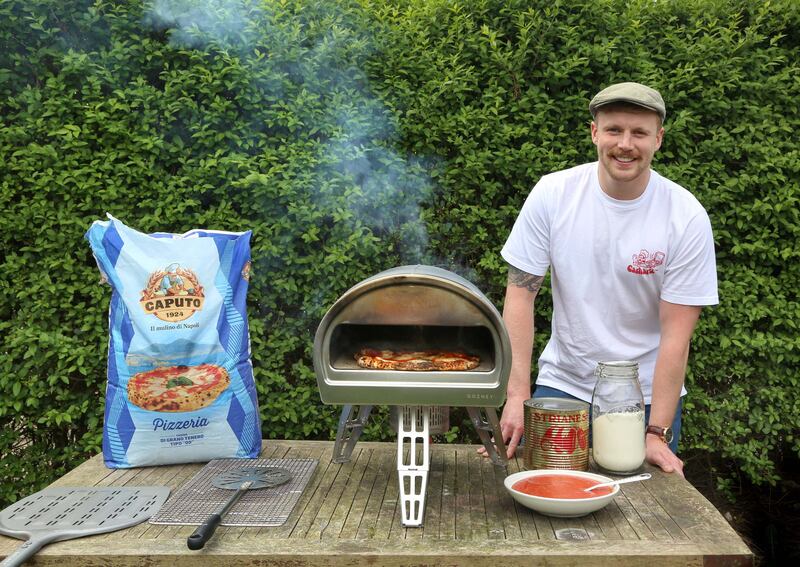
“I bought a Gozney Roccbox online about six months ago. I felt I could trust Gozney as they have been supplying top restaurants with wood-fired and gas ovens for years.
“My experience has been brilliant – I am buzzing with it. It only takes an hour to heat up to 500 degrees Celsius and we get to enjoy proper wood–fired pizza at home. I have videos of the first few pizzas coming out of the oven and I’m screaming with joy.
“Last week I made a harissa roast chicken which I finished in the Roccbox to char the skin, which worked really well. We do Indian night here at the house once a week so I’m planning on making flat breads and naan breads next week.
“We are eating a lot of veggie pizzas at the moment, with kale being the star of the show a lot of the time. Marinate kale in some good-quality olive oil, a touch of sea salt and then the char it gets under the high heat is amazing on pizza. Toons Bridge mozzarella and scamorza, Gubbeen chorizo and our Sliabh Aughty Hot Honey are never too far away either.”
Paul Flynn
Chef, Irish Times columnist
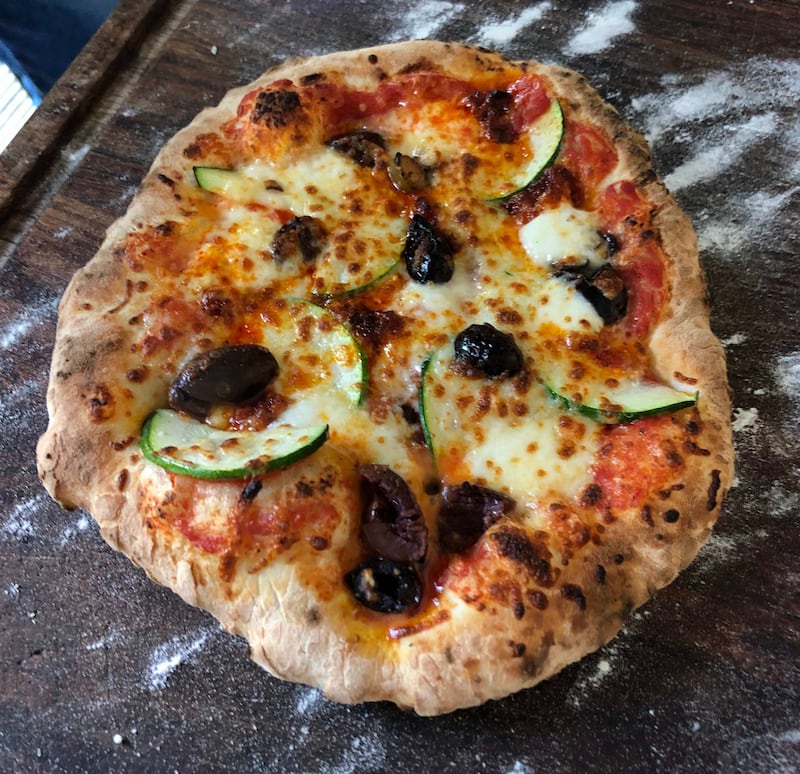
“After a false start because we got an Ooni with the Danish gas fitting by mistake, we borrowed a neighbour’s and more or less had instant success. The key was to watch the Ooni YouTube channel, that gave us real confidence.
“The temperature control is crucial. We got it up to full temperature after 15 minutes, then turned it down a little. We never got a chance to sit down, as soon as one was done, it was shared while another was being made. Our two girls made their two each with great confidence.
“We’re both big fans of pizza bianca, with no tomato sauce, just potato, bacon, red onion, grated mozzarella and Parmesan. I made a roasted garlic, chilli and rosemary oil to drizzle over them as well.”
Pat Lalor
Chef and cooking tutor
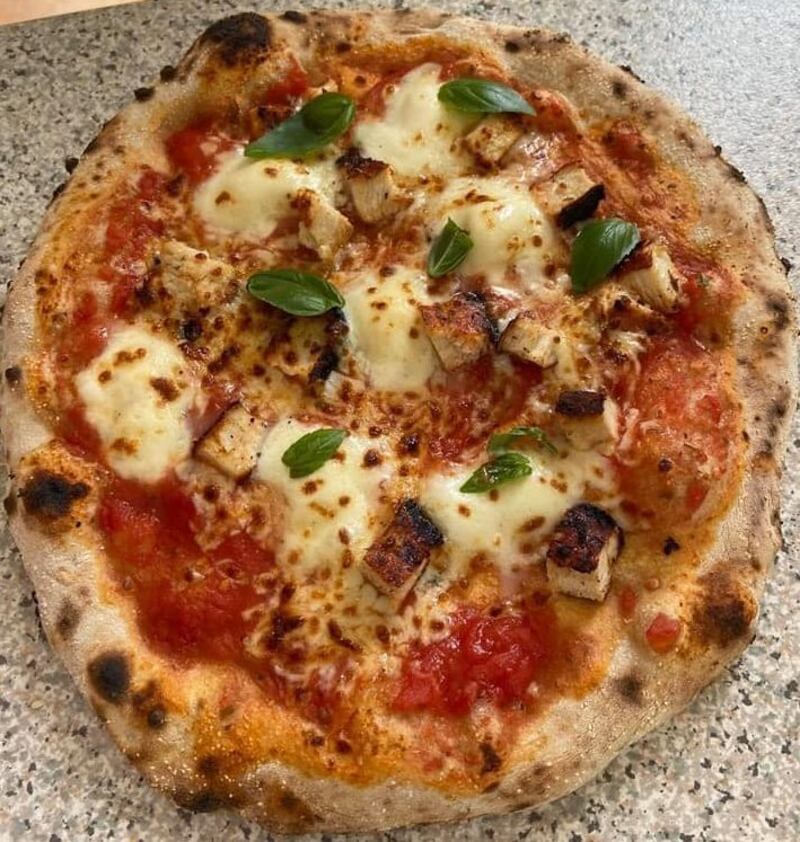
“When I was a chef in Pizza e Porchetta, which is now Osteria Lucio, my favourite pizza was the Apis, a spicy one with ventricina salami and chilli oil with a dribble of honey. I have managed to replicate it in my Roccbox and may even have made it nicer, with the addition of wild garlic pesto.
“I like to focus on the base and getting lots of flavours into the dough. Start off with a normal low hydration dough: 500g flour to 325g water. This makes it easier to work with, so you gain confidence in how to handle the dough and how to shape it, then broaden your scope to make sourdough pizza base. It takes two days of fermentation, but wow, the flavour.
“When you put the pizza in the oven at 450 degrees, after 10 seconds start to turn it, keep turning it towards the flame to achieve nice spotting.”
Joanne Cronin
Technology consultant and food blogger
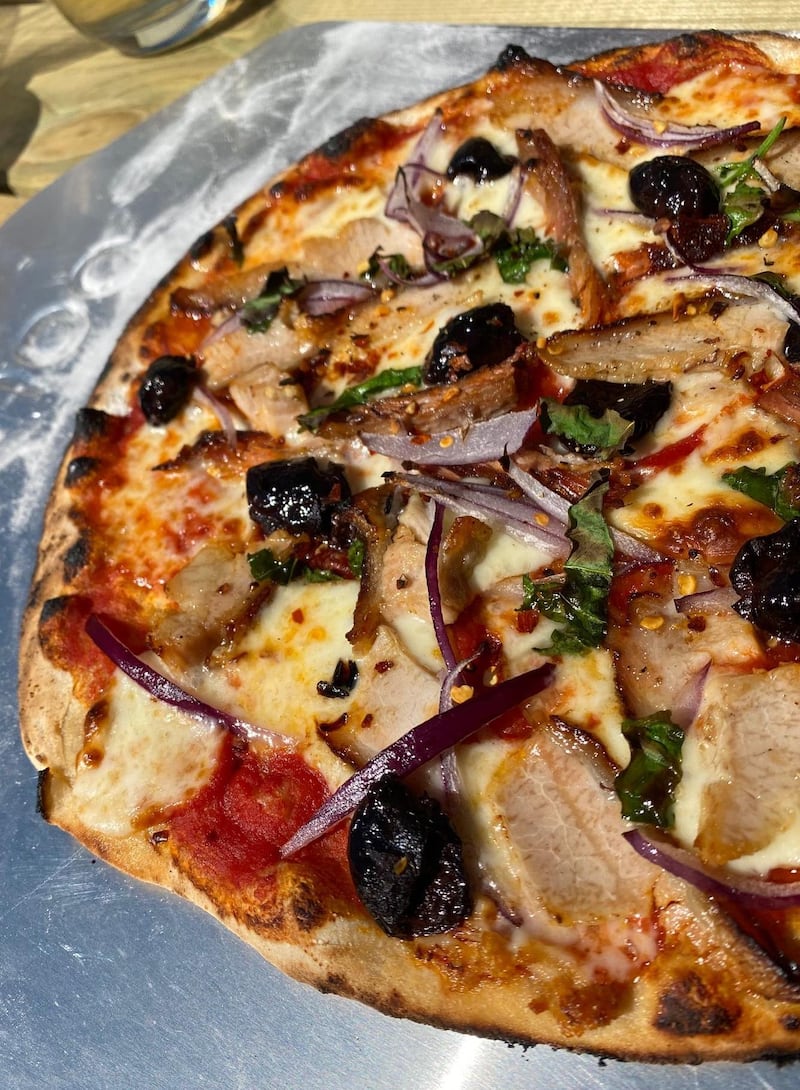
“I first saw the Ooni mentioned on Instagram Stories. I was immediately sold on the idea, and purchased it directly from the Ooni website. We’ve had it about a month now. We use it about two or three times a week. It’s very easy to make dough and have it in the fridge. Within 30 minutes you can have the oven warmed up and be enjoying a fresh pizza.
“The first pizza or two were a learning curve. The gas burners are located at the rear of the oven, so it’s obviously hotter there and can burn the edges quite quickly. It’s important to give it time to heat up and get the base stone ready. Pre-made bases are great to start with. If you are using fresh dough, made sure to flour your bases well so that they slide easily.
“I’m a fan of spicy, salty flavours, so I use fresh mozzarella (preferably Macroom mozzarella from my neighbour from home, Johnny Lynch), ‘nduja, salami, anchovies and chilli flakes. The classic of basil and prosciutto is also hard to beat.”
Gaz Smith
Chef and restaurateur
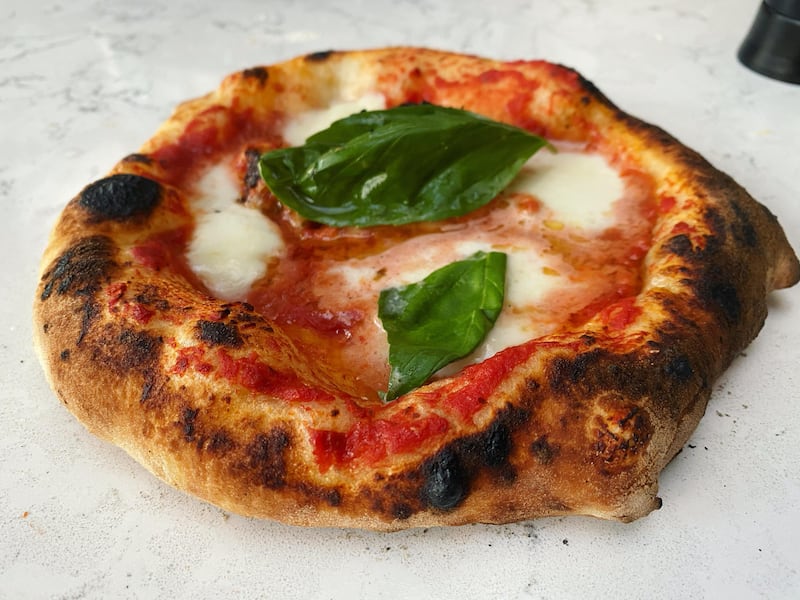
“A couple of my friends have Oonis and were sharing pizza photos and a big debate started on Ooni versus Roccbox. I am incredibly impulsive and within half an hour I had hassled friends into “lending” me an Ooni Koda.
“You may burn your eyebrows, or your pizza, on your first go; come to terms with that. Using a paddle for the first time can be tricky – the tiniest blob of sauce or oil as you dress the pizza can make it stick and slide unevenly as you slide it in, which is a disaster.
“My top tip would be to make your first few as flat breads, as you learn to master the dough and learn the movements of transferring the pizza in, rotating it inside as needed and then back out. I did a potato, Comte and onion flatbread that was ace
“I adore pizza, but a good pizza is an art form, and I didn’t do it justice. I think in future I will happily pay to get a pizza handed to me from a master pizzaiolo, of which we are now lucky to have several in Dublin.
“But I have realised that the Ooni makes a brilliant, super-fast and clean way of cooking steaks and seafood. I made a surf ’n’ turf and it was all cooked in minutes at 450-plus degrees, which meant a beautiful crust and juicy inside – without smoking out the house.”
Bruno Coppola and Lorraine Fanneran
Chef and restaurateur, owners of La Cucina and La Cucina Centro in Limerick
“We saw the frying pan method online and have been making it at home this way since 2015 – until we got our pizza oven last year.
“The frying pan has to be hot. You don’t need any oil, and the pan should be as close to the very hot grill as possible.
“It actually compares pretty well to the pizzas we sell, as we don’t have a wood-fired pizza oven in the restaurants. This is a close as you will get without a pizza oven at home.”
Bruno Coppola’s frying pan pizza
Makes seven bases
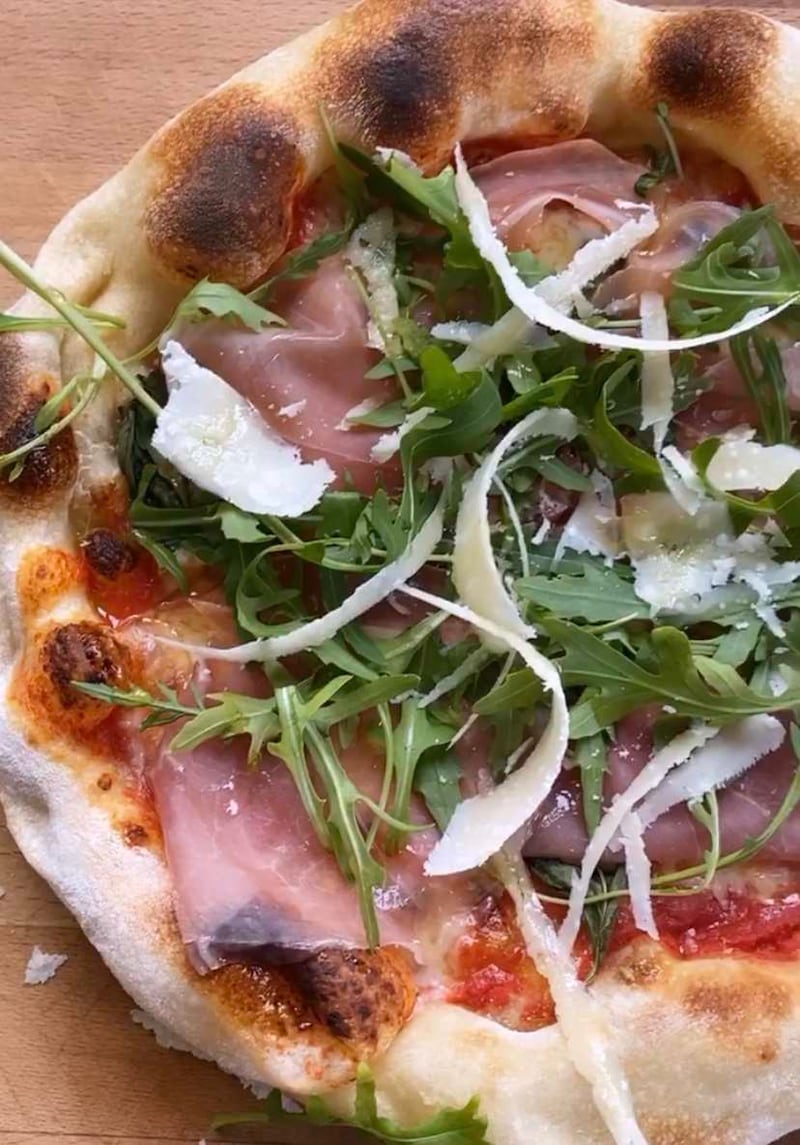
Ingredients
1kg '00' flour, or strong flour
620g water
30g salt
7g dried yeast
For the sauce (makes enough for four pizzas):
1 tin chopped tomatoes
1 tsp salt
½ tsp sugar
Fresh basil
Toppings:
Mozzarella, Parma ham, parmesan, basil, rocket
Method
1 Add the yeast to the water in a jug and stir until dissolved. Pour this into a large bowl and mix in the flour, in three stages. Add the salt.
2 Bring the dough together and mix thoroughly with your hands, then remove it from bowl and knead well on a counter for about 10 minutes.
3 Shape into a large ball, and leave it on the counter for 10 minutes, with a bowl over it. Re-shape the dough, pulling it into a perfect round shape, then place it back in the bowl, cover with cling film and leave for one hour.
4 Cut the dough into seven balls, weighing 230g each. Roll and shape into balls and place on trays, leaving space between them.
5 Leave the dough in the fridge overnight.
6 Take it out of the fridge five or six hours before using and leave to prove at room temperature.
7 For the sauce: mix all ingredients together in a bowl.
8 To cook the pizzas: heat your grill to the highest setting and heat a dry frying pan on the stove on medium heat.
9 Dip a dough ball in flour and stretch out the dough ball into a pizza shape, using your hands.
10 Place the pizza on the heated pan (make sure it is not too hot), top it with sauce, parmesan, mozzarella and basil.
11 Cook for two to three minutes, until the base is crisp and golden underneath; check it regularly.
12 Transfer the pan under the hot grill and cook for two to three minutes, until crisp and bubbling. Remove from the heat and top with Parma ham, rocket, parmesan and a drizzle of olive oil. You can watch Coppola making frying pan pizzas on the La Cucina Instagram account.











